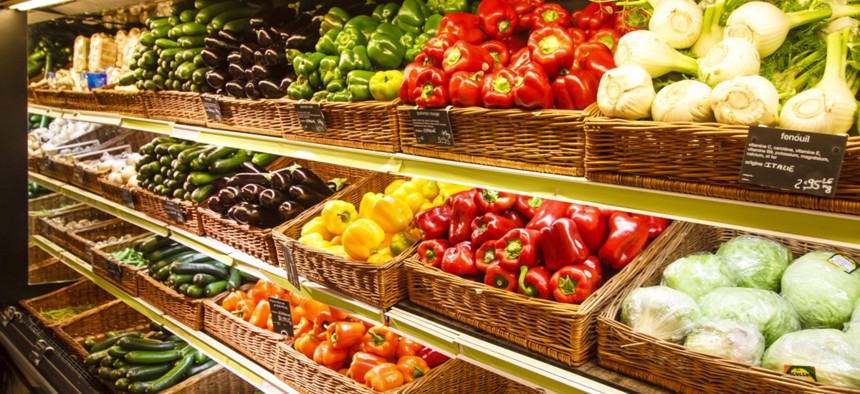Amid Shutdown, Feds Figure Out Ways to Fund Food Stamp Benefits. For Now.

Rrrainbow/Shutterstock.com
States have until Jan. 20 to request an early issuance to make sure they receive February SNAP funding.
The Trump administration announced late Tuesday that it can take steps to ensure there is enough money to continue paying for federal food benefits for low-income families through February, despite the partial government shutdown.
The U.S. Department of Agriculture is one of the agencies that was not funded before the shutdown started on Dec. 21. At that time, it was clear that the Supplemental Nutrition Assistance Program, which is better known as food stamps, would be financed through the end of January. What would happen if the shutdown extended beyond this month was less certain.
As President Trump’s stalemate with Congress has dragged on, state and local officials expressed concerns about what would happen to this assistance poor families depend on. Agriculture Secretary Sonny Perdue Tuesday announced that the agency has found ways to tap funding to keep SNAP going, as well as other nutrition programs run by the agency, such as those that provide school lunches to children from low-income families.
To keep SNAP funds flowing for another month, USDA will use a provision of the last “continuing resolution” that temporarily financed the agency that allows officials to tap money within 30 days of the CR’s end. This means states should contact USDA by Jan. 20 to request early issuance of funding, according to a news release.
“This is exactly what they [state officials] needed to hear,” said John Hicks, executive director of the National Association of State Budget Officers. SNAP was a significant shutdown concern for states, as the program assists 38 million people across the country, largely families with children. While the federal government pays the benefits, states administer the programs.
USDA expects to make available both the benefits and state administration money for February, totaling $5.1 billion, according to the agency.
Brandon Lipps, an acting deputy under secretary, said during a conference call that letters would be sent to states to explain the expedited process, according to the Associated Press.
"We know this is a time of great uncertainty, and no doubt anxiety for people who rely on SNAP and are dealing with tough times,” he said during the call. “I hope it's reassuring for us to make clear today that we're committed to maintaining service to SNAP clients without interruption to the extent possible under the law."
USDA officials also said they had found ways to fund other key nutrition programs, such as ones that pay for schools to provide free and reduced-price breakfast and lunches to students who qualify. For those programs, states will get money to keep them going through March, the agency indicated.
Another key program, Women, Infants and Children, provides baby formula and other assistance to pregnant women and families with babies. USDA officials said they would send $600 million in additional funding to state agencies to maintain those benefits through February.
While commodity food, which is primarily sent to food banks, will continue through February, USDA acknowledged that administrative funding that states receive to run that program has lapsed and won’t be available until after the shutdown.
In a statement, Robert Greenstein with the liberal-leaning Center for Budget and Policy Priorities called on the Trump administration and Congress to end the shutdown, noting that if it lasts into March some of these key food programs will then run out of money. “If that happens, millions of poor children, seniors, and others will face hunger and hardship,” he said.
On Wednesday, Trump reiterated his pledge to not back down from keeping much of the government shutdown in order to get his requested $5 billion for a border wall with Mexico. House Democrats, who have said that is not a good use of federal tax dollars, also began voting on legislation to fund various agencies.






